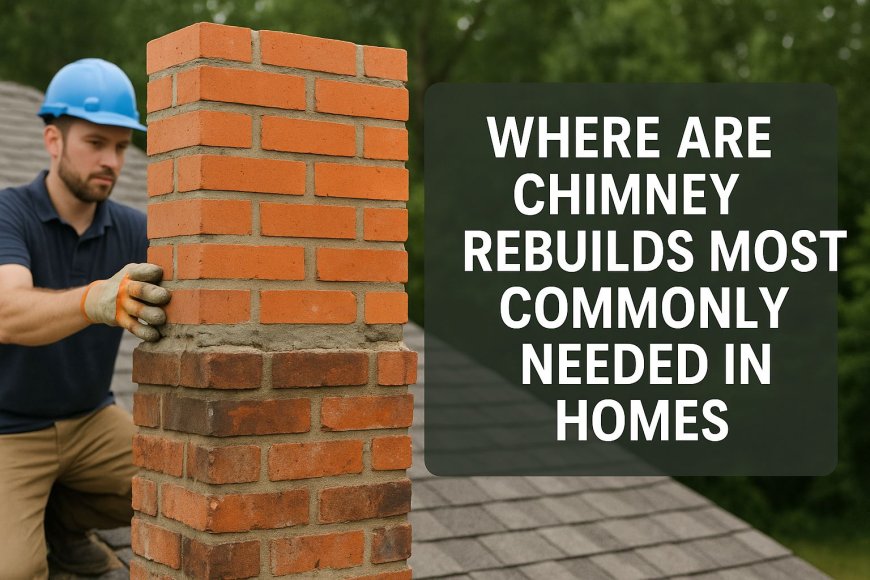Where Are Chimney Rebuilds Most Commonly Needed in Homes
Expert chimney rebuilds to restore safety, efficiency, and style to your home. Professional service you can trust.

If youve ever noticed a crumbling brick at the top of your house or wondered why your fireplace isnt working quite right, youre not alone. Chimneys are sturdy, but time, weather, and a bunch of other factors can really wear them down. Some spots on your homes chimney are more likely to need serious repairs than others, and knowing where to look can save you a lot of hassle (and money) in the long run. Lets take a close-up tour through your typical house and see wherechimney rebuildsmost often pop up.
The Battle at the Top: Chimney Crowns and Caps
Imagine your chimney like a castle turret poking out above your roof. The very tipcalled the crown or capfaces the full force of sun, rain, snow, and even the occasional bird looking for a free seat. Over the years, all that exposure wears away the surface, forming cracks or even holes. Once water finds its way in, it can freeze and expand, making the problem even worse. In older homes, especially those with concrete or stone crowns, this spot is often the first to show signs of serious trouble. If you see chunks missing or water leaking down into your attic, its a good bet that the top of your chimney needs more than just a patch-up.
Above the Roofline: Where Bricks Brave the Elements
Right above your roof, the chimney stack stands alone. This part is completely exposed, with nothing to shield it from the changing seasons. Water, wind, freezing temperatures, and even the baking summer sun can all cause bricks and mortar to weaken or crumble. Its pretty common to see spalling (where the face of the brick starts popping off) or missing mortar joints up here. Sometimes, entire sections of the chimney need to be rebuilt because the damage goes deeper than just the surface. If you spot white stains (called efflorescence) or loose bricks, thats a clear sign this area needs attention.
Below the Surface: Hidden Issues in the Attic and Fireplace
Not all chimney problems are out in the open. The part that passes through your attic or walls can hide cracks or leaks that you wont notice until you start seeing water stains or smelling musty odors. Sometimes, shifting foundations or settling can cause the whole chimney to tilt or crack inside the house, leading to major repairs. The fireplace itself, especially the area just above it called the smoke chamber, is another common trouble spot. Over years of use, heat and soot can weaken the bricks and mortar, making them unsafe and in need of a rebuild or heavy-duty repair.
Table: Where Chimney Rebuilds Are Most Needed
| Chimney Location | Common Problems | Why It's Vulnerable |
|---|---|---|
| Chimney Crown/Cap (Top) | Cracks, deterioration, water leaks | Direct exposure to all weather, freeze/thaw cycles |
| Above Roofline | Spalling, missing bricks, loose mortar | Completely unprotected from elements |
| Attic/Inside Walls | Cracks, leaks, shifting structure | Hidden damage, foundation movement |
| Fireplace & Smoke Chamber | Brick damage, loose mortar, unsafe surfaces | Heat, soot, and years of use |
A chimney is like the backbone of a fireplaceif its weak or broken at any spot, the whole system can suffer.
Conclusion: Keeping an Eye on Your Chimneys Trouble Spots
Most people dont climb up on their roofs or poke around in their attics very often, so its easy to miss the early warning signs of chimney trouble. But by knowing where to lookthe top crown, the stack above the roof, hidden sections inside, and the fireplace areayou can catch problems before they turn into expensive disasters. A little attention now can mean a safer, warmer, and more comfortable home for years to come. So next time youre enjoying a fire or glancing up at your roof, remember where thosechimney rebuildsare most likely to be needed.
Read More: Bellingham Chimney Sweep











































